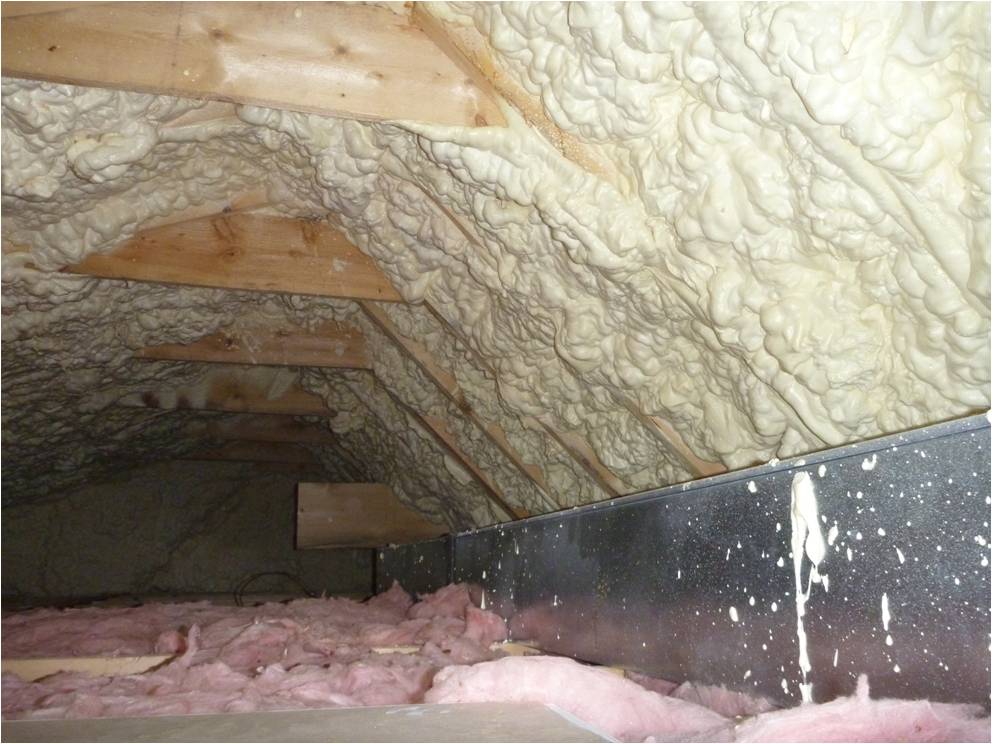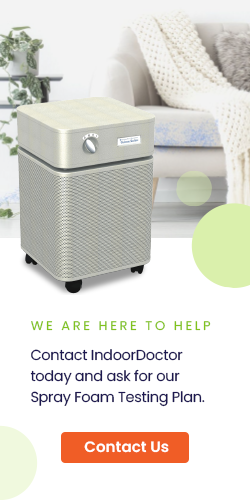In an effort to reduce home energy costs, more and more homeowners are retrofitting their homes by installing spray foam insulation. While this material is effective at reducing heat loss, it can also emit airborne, cancer-causing agents. At IndoorDoctor, we’ve seen an increased number of indoor air quality concerns from clients who have recently installed spray foam; they report prolonged foul odors throughout the home and experience adverse health symptoms.
Spray foam manufactures and installers claim the product to be safe for home residents and for the environment by advertising the material as “non-toxic,” “volatile organic compound (VOC) free,’ “formaldehyde free,” and “green.” Some installers even suggest the spray foam will improve your air quality by preventing outside air pollution from entering the home. The Environmental Protection Agency (EPA), however, points to the harmful chemicals IndoorDoctor clients report; “Spray polyurethane foam (SPF) is an effective insulation and air sealant material; however, exposures to its key ingredient, isocyanates such as methylene diphenyl diisocyanate (MDI) and other SPF chemicals that may be found in vapors, aerosols, dust or on surfaces during and for a period of time after installation may cause adverse health effects such as asthma.”
How do the key ingredients mentioned by the EPA become harmful? Spray foam consists of two compounds—an isocyanate and a mixture of polyols, additives, and catalysts—that are mixed together at the job site to form the hardened insulation. When these compounds become unbalanced or the chemicals are not heated to the correct temperature before being sprayed, harmful chemicals can be released into the air. One such chemical is phenol-formaldehyde, which replaced urea formaldehyde (UFFI) when it was banned by the U.S. Consumer Product Safety Commission in 1982. Current spray foam mixtures containing formaldehyde can produce the airborne MDI against which the EPA warns. Such chemicals can cause cancer and contribute to unsafe air quality. The symptoms of these chemicals will be addressed in another blog post.
While mixing toxic chemicals in a controlled setting such as a laboratory can be challenging, conducting this practice in the confines of a hot attic or restricted crawlspace poses even greater challenges. Othervariables that can increase the risk of dangerous off-gassing include temperature and humidity, thickness of spray foam application, and the cleanliness and functionality of equipment. Lastly, the air flow in confined spaces increase the number of chemicals and VOCs released into the air; often installers fail to properly ventilate the airspace to make up for the air flow loss resulting from the spray foam application.
How do you know if your spray foam is off-gassing these cancer-causing chemicals? IndoorDoctor recommends conducting independent testing for formaldehyde and VOCs in addition to a civil-engineered assessment of current ventilation within your home.






